|
Bullwhip 2010
My Whip Story
originally posted April 14, 2010
I first owned an Australian kangaroo hide bullwhip back in the mid
seventies. At the time I was an active member of the Thunderbird Fast
Draw club, which met on Sundays at a local indoor range and turned the
air blue with black powder smoke. We had Bob Mernickle, the world
champion at double balloons, in the club. He could draw a single action
pistol and fire two rounds, breaking two balloons ten feet apart, in
twenty-two one hundredth of a second. It takes about fifteen one
hundredths of a second to blink your eyes, so Bob was fast.
Guys like Bob paid a lot of attention to their guns, which were
altered for fast draw with aluminum barrels and cylinders and would
probably blow up if a real round was put through them. Bob would sit
for hours, watching television, cleaning and polishing his gun. A
request to handle or inspect Bob's gun would be met with a cold refusal,
as if you had asked to fondle something more intimate than a cold piece
of steel and aluminum.
On my first visit to the club with the whip, Bob asked if he could
try it. We went out on the driveway behind the clubhouse. Bob drew his
hand back and then jerked it forward, which is not the smooth motion one
makes to get the whip to crack. The whip responded by picking his gun
up out of his holster and dropping it on the gravel driveway. I don't
think he could have done that on purpose if he tried for a month.
That should give you some idea of how tricky a bullwhip can be, and
it explains why I'll demonstrate for my students, but none of them get
to give it a try. My new whip could take out an eye with no trouble at
all.
My New Hobby (As if I need another one!)
originally posted
March 02, 2010
Back in China from Australia

Fast Forward
Ruth and I are on a fast.
Eating no food at all. Just water. This is nearing the end
of our third day. I haven't done a fast for many years. I
think my last one was in the early eighties and lasted for twelve days.
For this one I'm aiming for five or six days, because we start teaching
on Monday.
Why a fast? We sent an
email to Bernie, our Australian host, saying that without his cooking it
just didn't seem worth our time to eat. This is almost true.
But after a holiday spent eating and drinking quite freely, we both feel
like we need to detoxify and change our eating habits.
How hard is it to fast?
So far not hard at all. I had a bad headache yesterday, but today
I'm feeling pretty good, if a bit low energy. Ruth and I both did
the morning workouts on the elliptical trainer and though our calorie
count is dropping, we're still hanging in for half an hour.

What am I hoping to achieve?
A bit of belly loss would be nice, but I know that it will come back
instantly once I start eating again. To lose fat for good takes a
dietary and lifestyle change. So really we're out to change our
eating habits. When we come off this fast, we want to eat smaller
portions, with a higher percentage of vegetables and less meat.
I'm tempted to go vegan, but I don't think I'm quite ready for that.
One thing I know for sure, I don't want to reward myself for fasting by
going on a binge when it's over. I have an investment in this.
I returned from Australia with a new hobby. Don't laugh. Or
go ahead and laugh if you want to - I'm not afraid of being absurd.
Here's the slightly embarrassing thing: I'm learning how to make whips,
specifically the wonderful bullwhips for which Australia is famous.
You may not know this, but any time you see a whip in a
movie, it's an Australian whip. Indiana Jones carried an
Australian whip. I bought one in the late seventies, and didn't
realize how good it is until I got looking for a new one in Australia.
My old whip is a cracker, a thing of beauty. But it is old.
I wanted a new one, but couldn't find what I liked on this short trip to
Australia. Then I realized I'd rather learn how to make one
myself. So here goes.
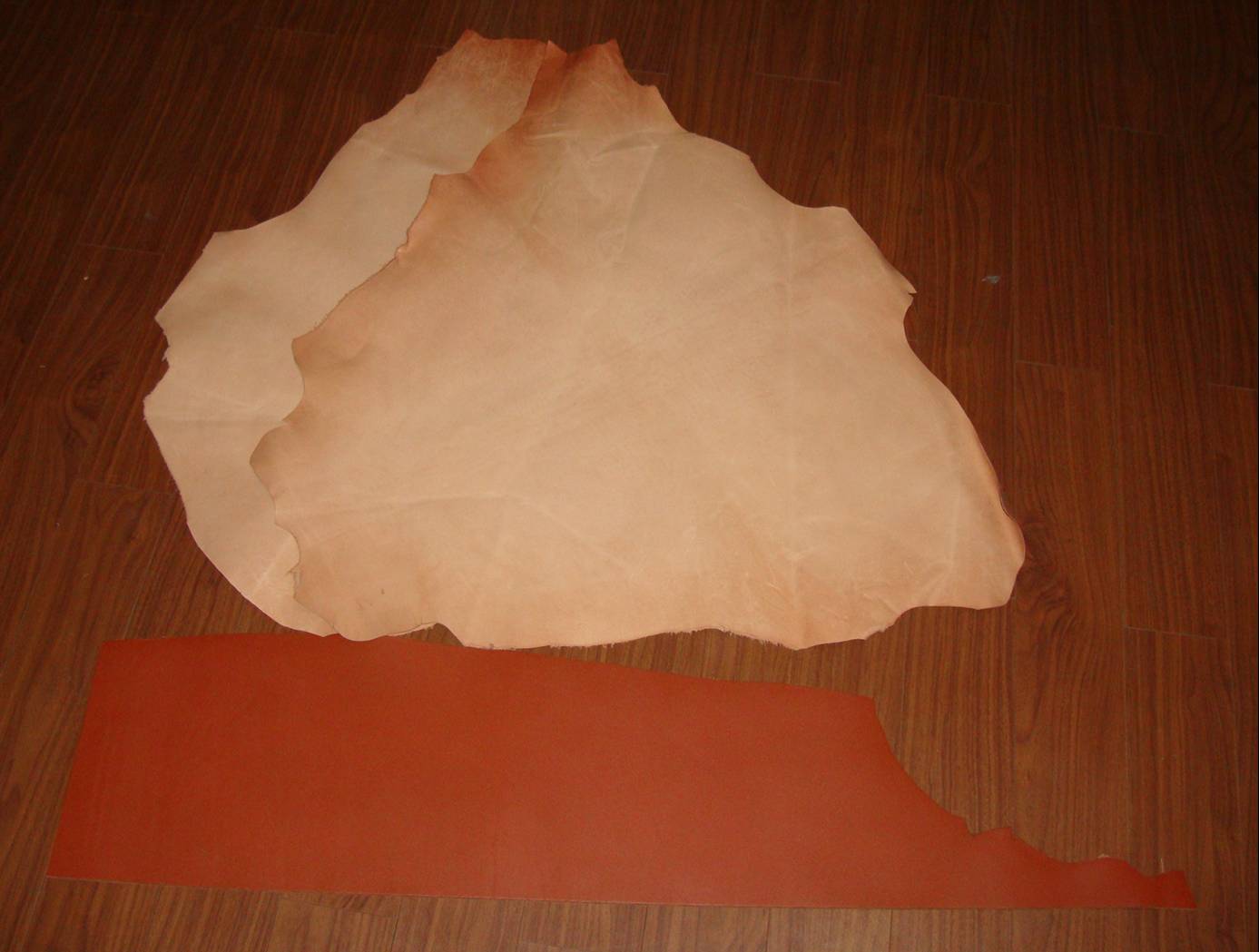
I bought these two kangaroo
skins from a leather dealer in Melbourne. Kangaroo leather
is amazingly strong. I cut a strand only an eighth of an
inch wide off these hides and couldn't break it with my hands.
Neither could anybody else I handed it to. |
I also bought a strand
cutter. So below you see my very first attempt at plaiting
eight and sixteen strands.
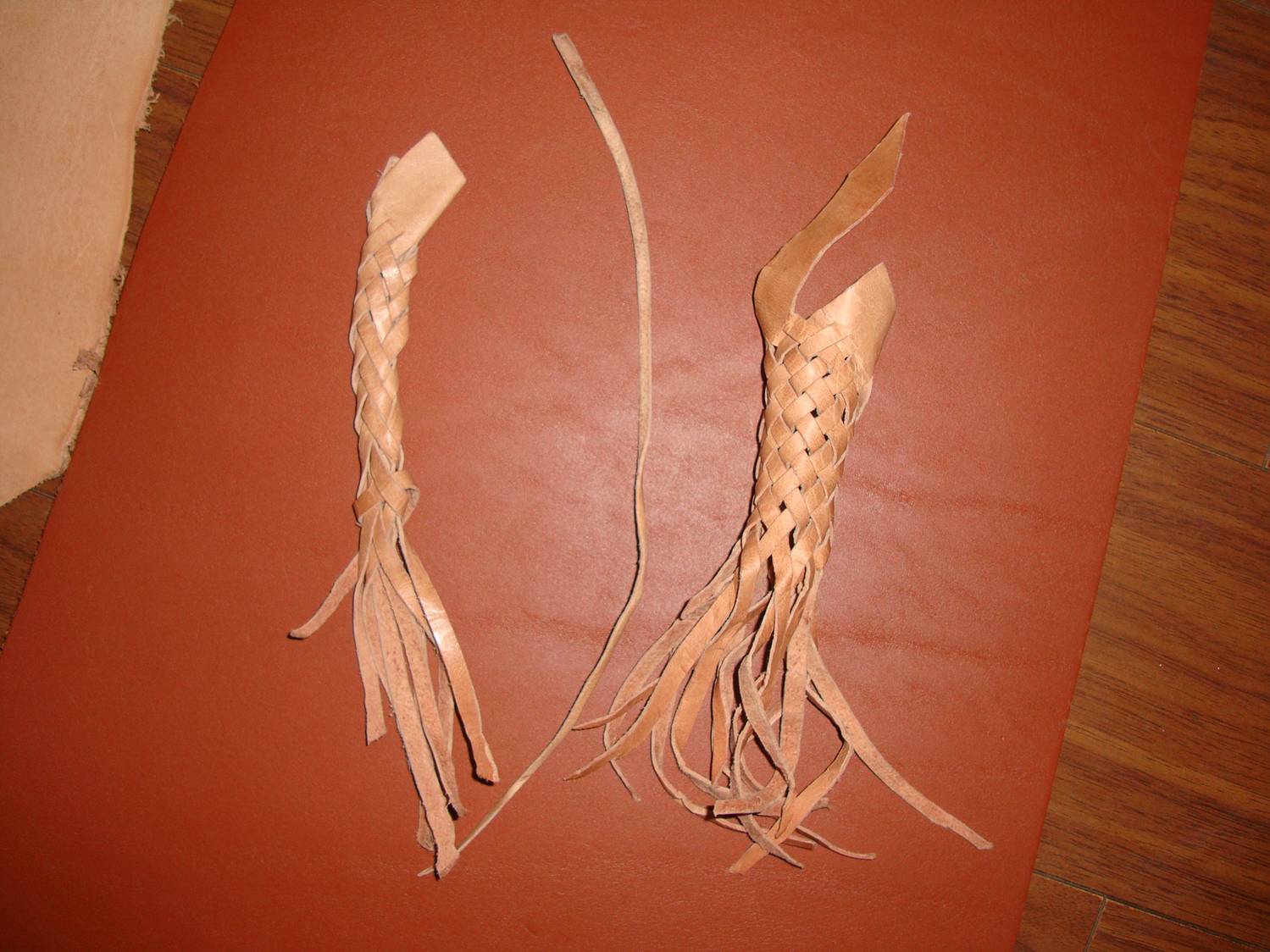 |
It seems I'll be able to make something that looks a lot like an
Australian bullwhip. The trick is going to be building the belly,
the core of the whip that determines its handling characteristics.
That is going to take some research, and probably a failure or two.
Whipping it Into Shape
originally posted
March 16, 2010
The whip making project has
been soaking up my spare time this past week. It's been a great
adventure. I now have an email buddy in Australia who is an
experienced whip maker. He's been sending me tips and photographs
of his work.
I've been making my first
bullwhip from the kangaroo hides I bought down under.
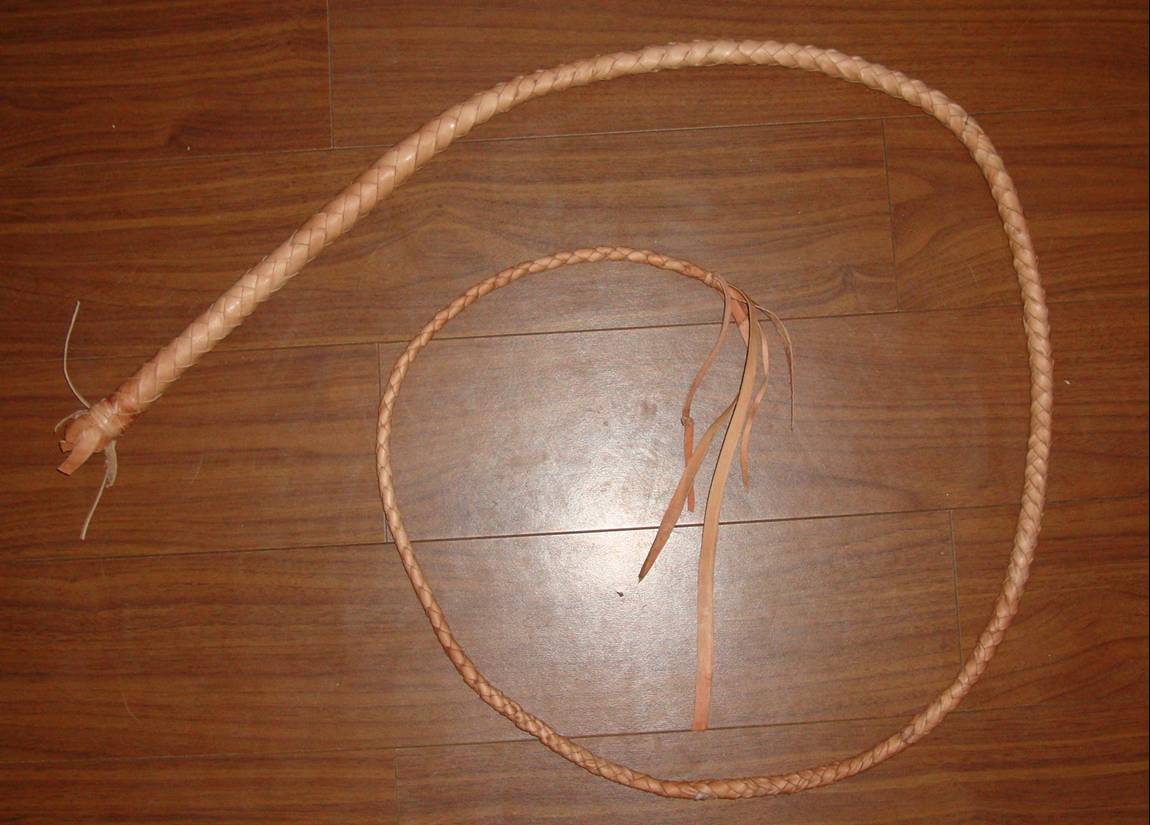
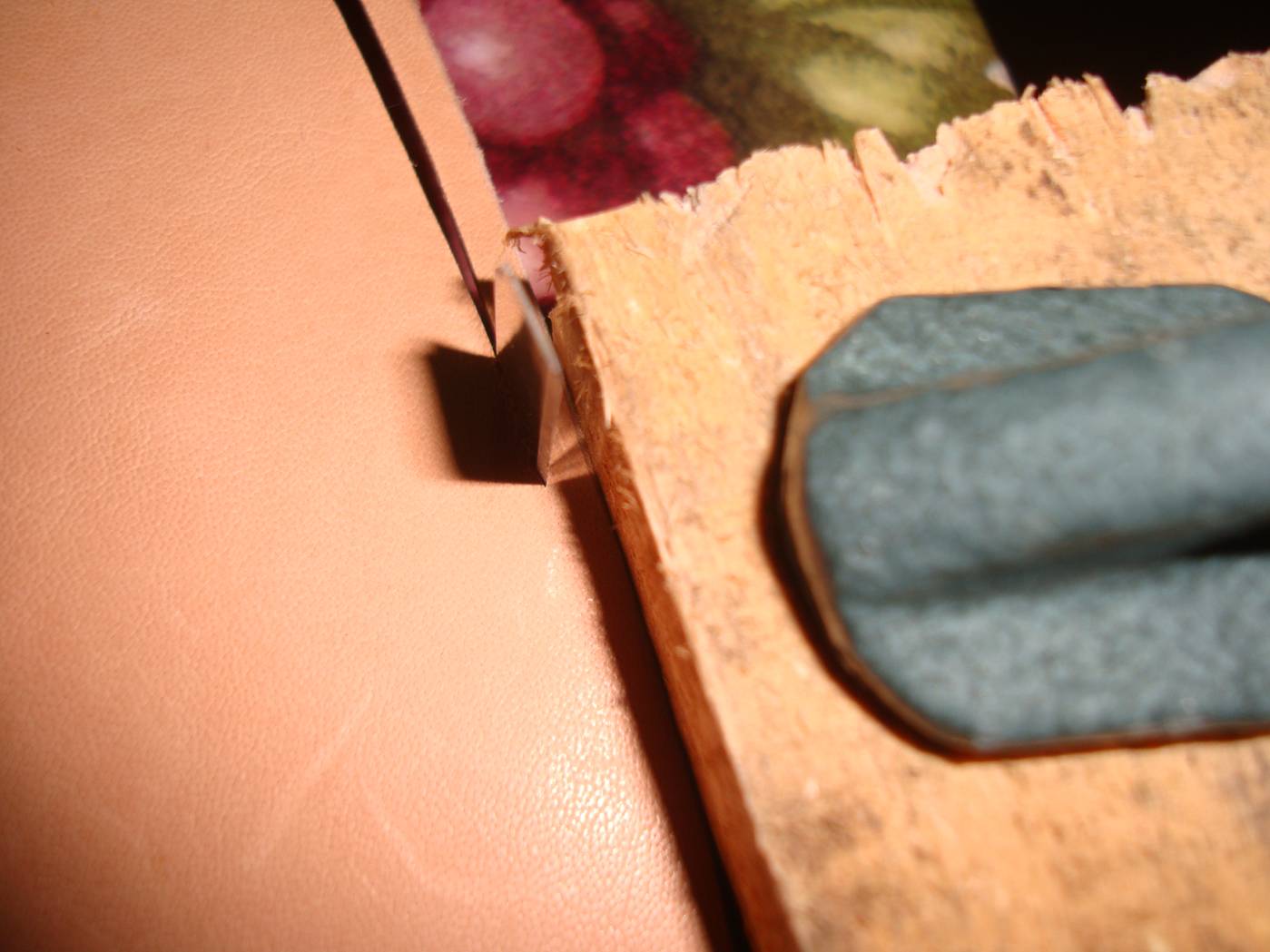
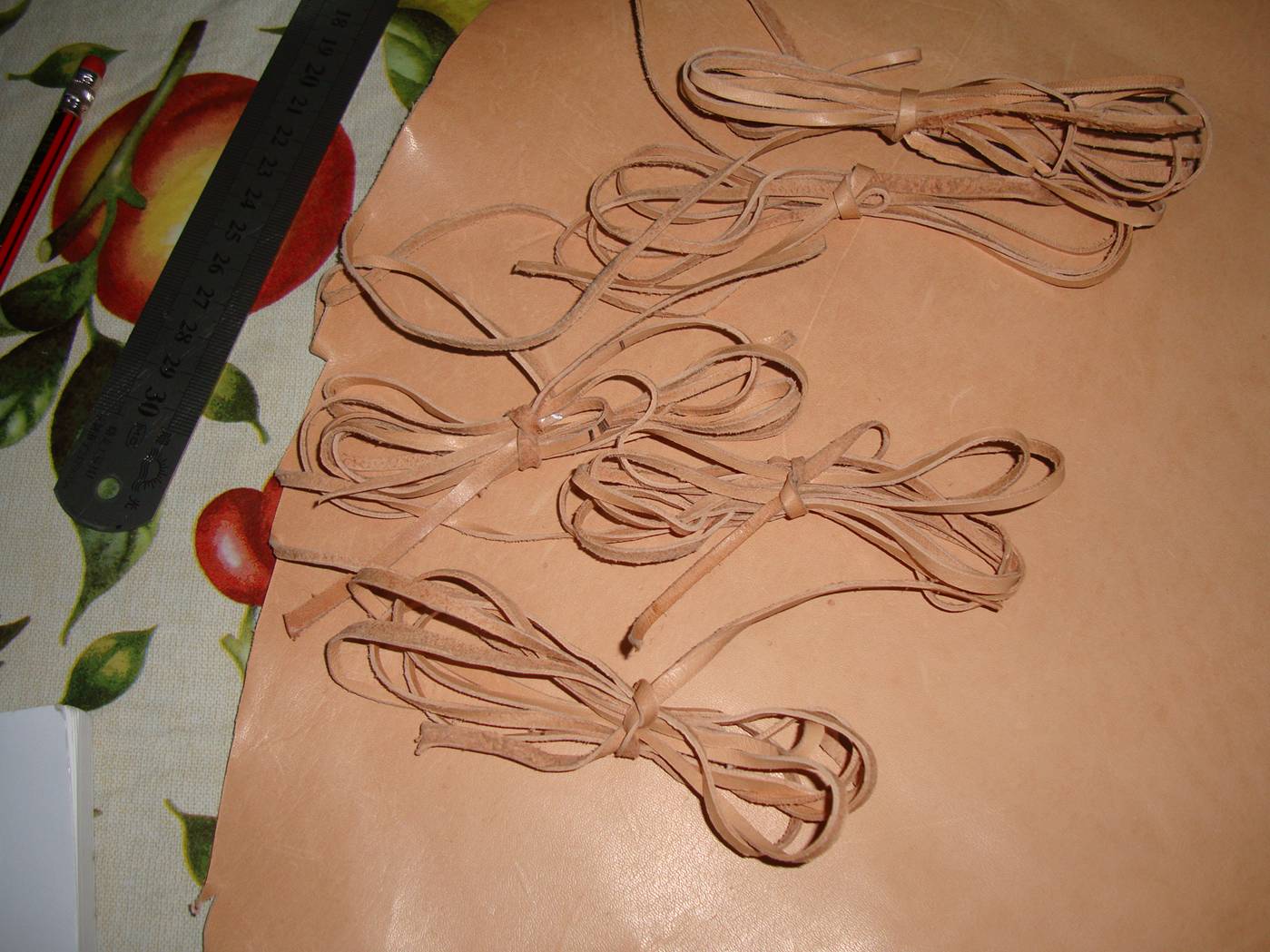
There's a lot more to an Australian
bullwhip than meets the eye. Mine will be five layers - a four
strand plaited core, a bolster, an eight strand plaited belly, a second
bolster, and finally a sixteen strand plaited overlay. It's fun to
do something with my hands again.
One formula for a whip called
for a lead shot loaded belly, but I can't find lead shot in Wuxi,
though I'm sure it must be here someplace. Another instruction called
for an eight inch bridge spike to start things off, but I couldn't find
one of those either and settled on a long bolt as a substitute. It
took a ride to the 招商场 (zhāo shāng chǎng - attract business market") to
find something as common as a C-clamp. There doesn't seem to be a
do it yourself tradition in China, and tools that are very common in
Canadian hardware stores are hard to find here. I'm planning to
post the whole whip making process once it is completed.
More on this later.
Whipping Along
originally posted
March 27, 2010
I'm making progress on the
bullwhip project, but it's certainly been tedious. There's a lot
more to an Australian bullwhip than meets the eye. The one I'm
making has five layers - a core of four strand plaited kangaroo leather,
covered by a bolster (a solid leather wrap), covered by an eight strand
plaited belly, covered by a second bolster, and finally the sixteen
strand overlay. Whew. Its been a steep learning curve.
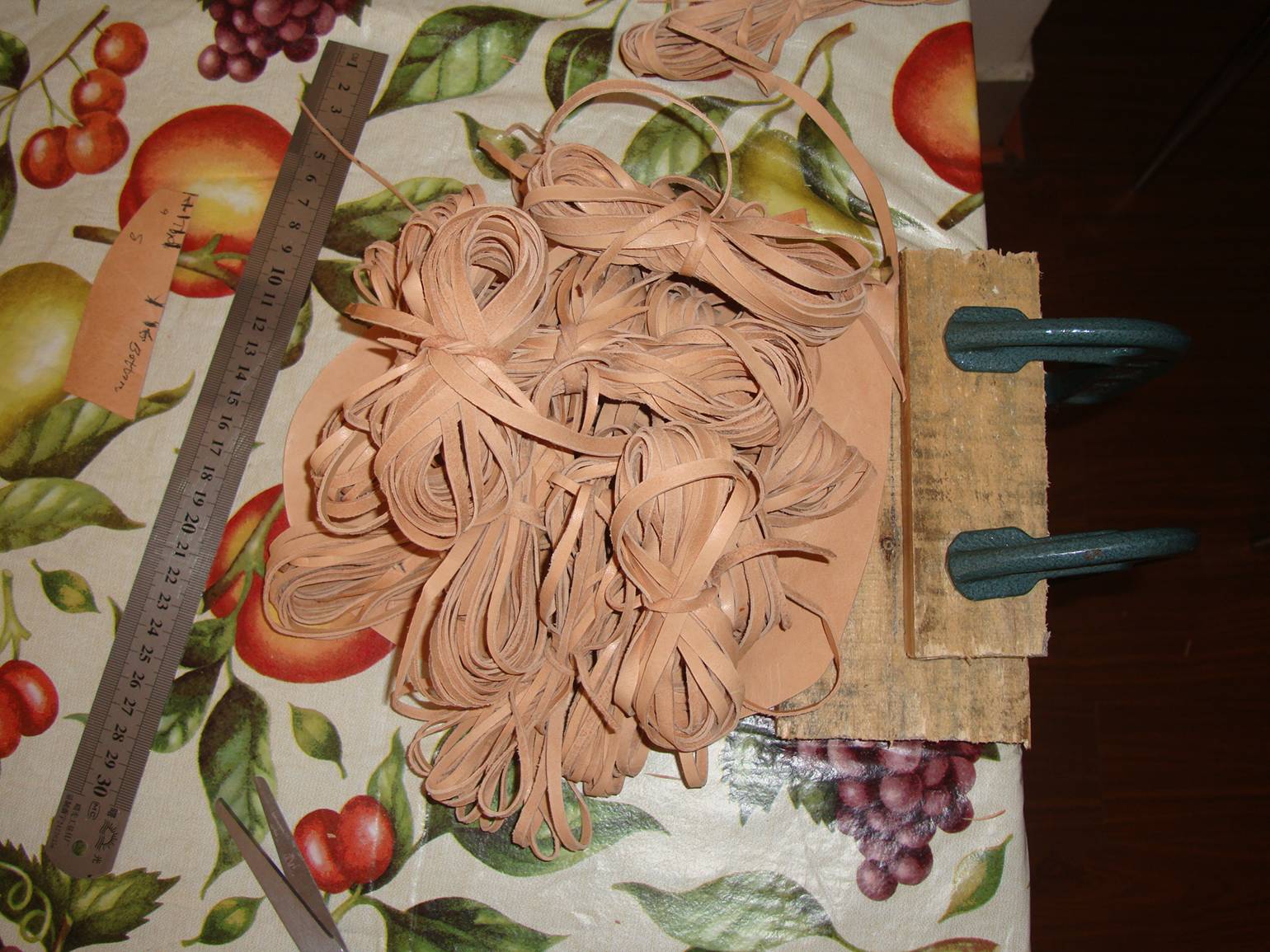
I've plaited the transition
from the over one under one handle pattern to the under two over two
thong pattern at least five times. Three times because I wasn't
happy with where it ended up, and a couple of times more because I made
a mistake and had to undo it all. No matter. This hobby is
pretty much over when this whip is finished, at least until I can afford
some more kangaroo leather. So there's no need to rush. Come
to think of it, there's no need for a bullwhip either. I certainly
am subject to strange obsessions and compulsions.
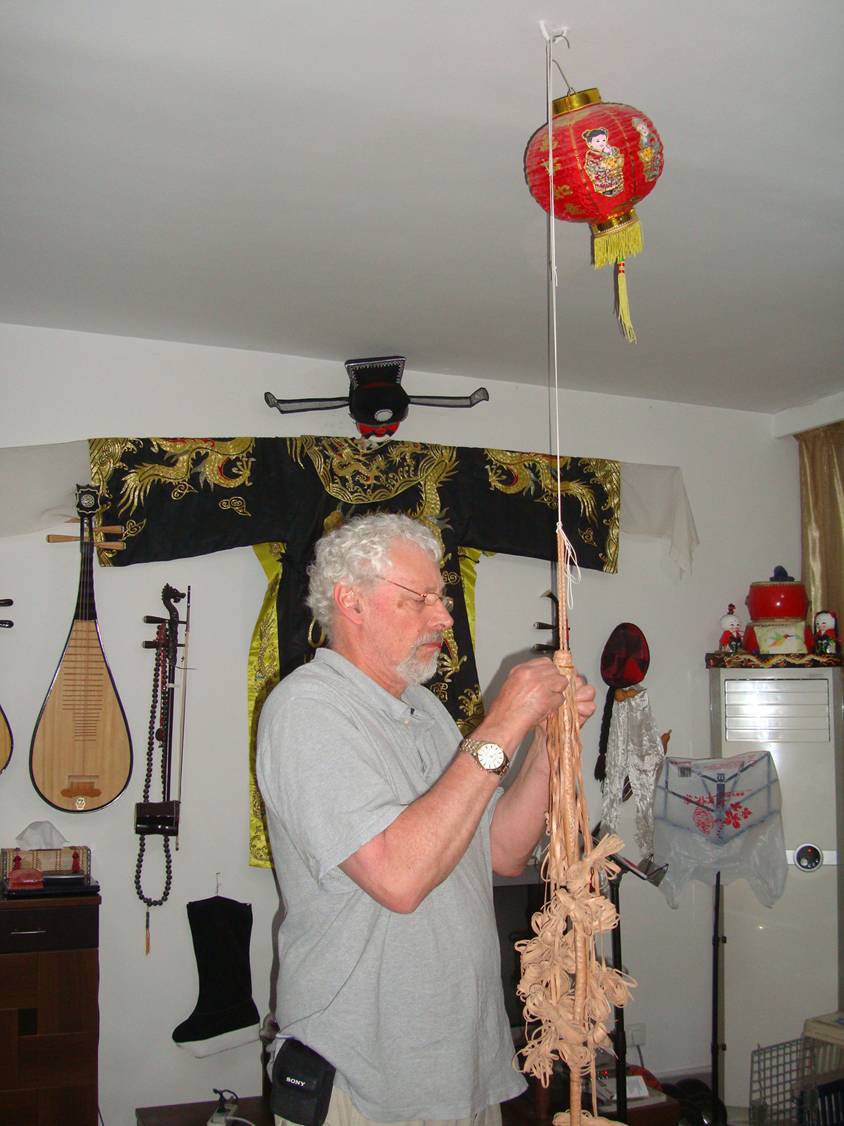
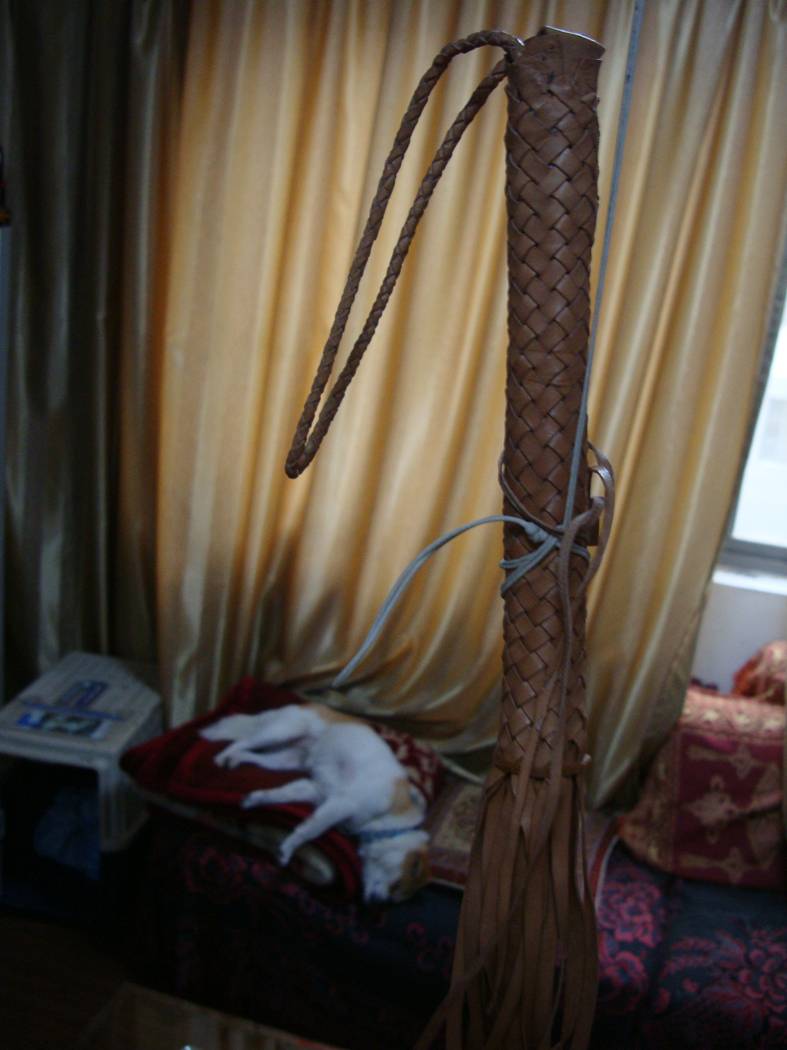
I just knew that ring on our ceiling
would come in handy someday.
I think the whip is going to
be a thing of beauty. At least it looks good so far.
Bullwhip 2010 finished.
The whip is finished, and it serves the only possible purpose a whip can
serve for me in this day and age, since I don't have a bull to whip and
am not attracted to S&M. My new bullwhip makes a great demonstration
prop for a discussion of acoustics. Last week I promised my classes
that I would break the sound barrier, and that's what I've been doing.
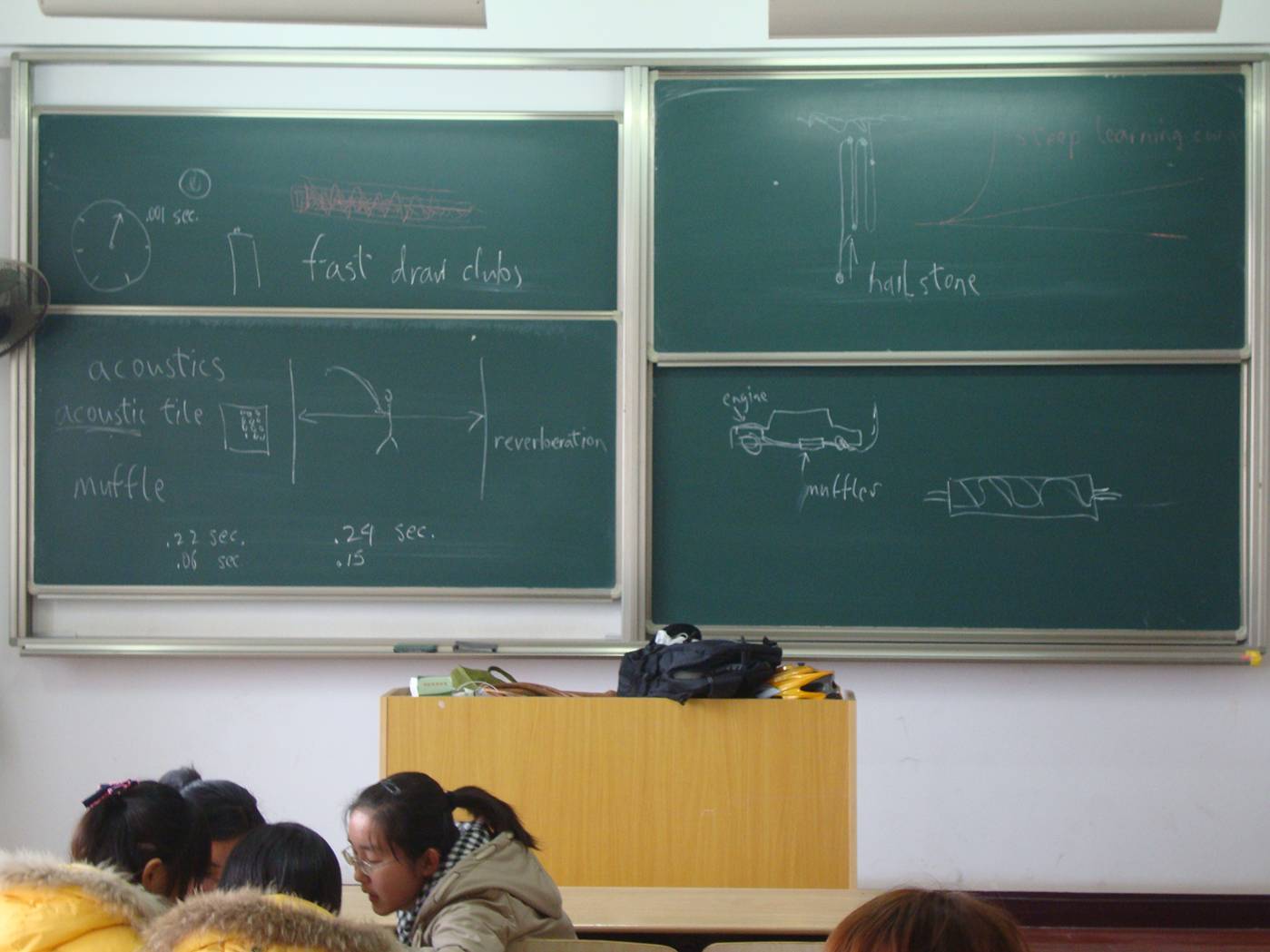
Double click on the picture above to see
the demonstration of breaking the sound barrier.
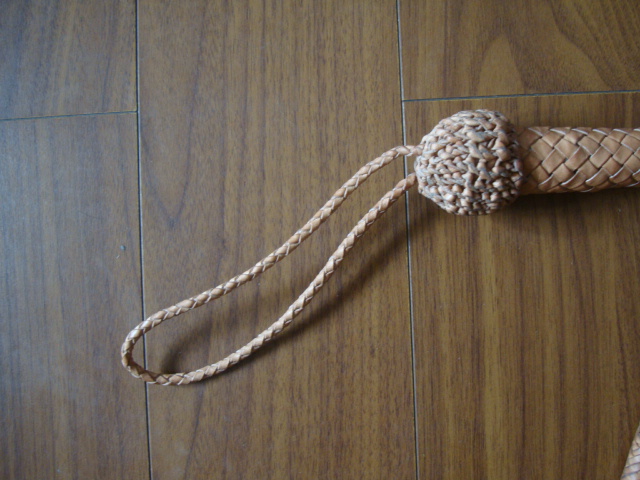
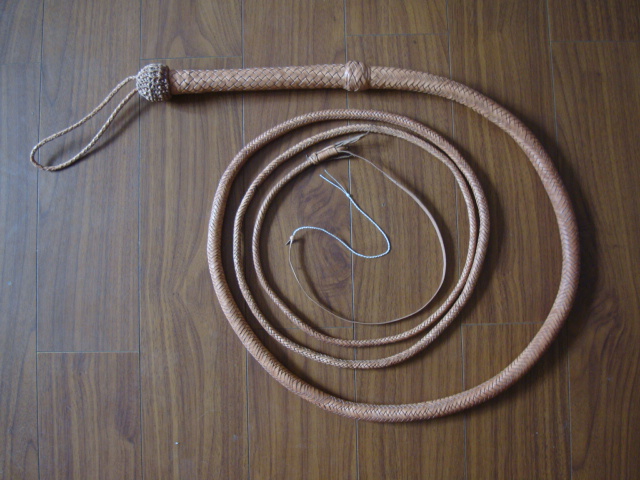
The ball at the end of the handle is now a
scobie hitch. I liked the look of the Turk's-head better.
But with the wrist strap coming out on each side, a Turk's-head turned
out to be impossible to balance and tighten. It would come off for sure.
The scobie hitch is on for good.
Whip Report
The bull whip is essentially
finished. It came out at ten and a third feet, not counting the
fall and popper. I want to rework the Turk's-heads on the handle.
Also, the leather for the fall turned out to be too brittle. Two
cracks and the popper would break off. I've replaced the cow hide
fall you see in this picture with a kangaroo hide fall, but I'd like to
eventually find something thicker.
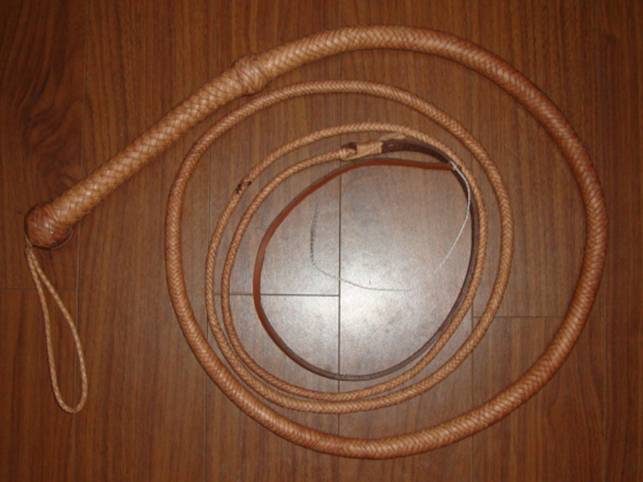
I can now demonstrate my
ability to break the sound barrier and everybody seems to be impressed
with the workmanship. Making this whip turned out to be more
difficult and time consuming than I expected, but isn't that always the
way it goes. Such arrogance on my part to think that I can match
the work of a professional who has spent years learning a craft. I
think I came close though. Now it seems I'll have to make a second
whip, just to make use of everything I learned making this one.
That will have to wait until my plaiting induced tendonitis dies down
and I get a couple more kangaroo hides from Australia.
I'm going to write up the whole process soon, and maybe
send that in to a how-to site.
Bullwhip 2011
Originally posted May 07, 2011
I've been building my second
bullwhip. Our Australian friend, Marion, brought me back two
beautiful kangaroo hides when she returned to Wuxi this past October.
Now I'm cutting lace and trying to duplicate the whip I bought in
Seattle way back in 1974. My excuse was that I needed a prop for a
western I wanted to make, but really I want to play with a good
bullwhip. I've come to appreciate what a great bullwhip that one
is. Though very old now, with a couple of broken strands, it's
still tight and solid and the kangaroo hide is still looking good.
You can read in the comments last month a question from a student, asking me why I
would make a bullwhip. "Are you a farm hand or a maniac?"
the student asks.
Maybe a bit of both. I've been interested in bullwhips since
growing up on the adventures of
Lash LaRue, a major cowboy star back in the fifties.
He used his whip not so much as a weapon or to inflict pain, but to
disarm the bad guy, taking the gun out of his hand. He also was
one of the most romantic of cowboys, and I remember one scene in which
he lounged in a meadow with a pretty woman and used his whip to pick her
a flower. My kind of cowboy hero.
Despite the current association of whips with the S&M
scene, they are legitimate ranch tools and can be very useful. But
they are also fun to play with, and the only way I know of to break the
sound barrier without owning a jet airplane. That's what makes the
bang when you crack a whip. The tip actually travels faster than
the speed of sound.

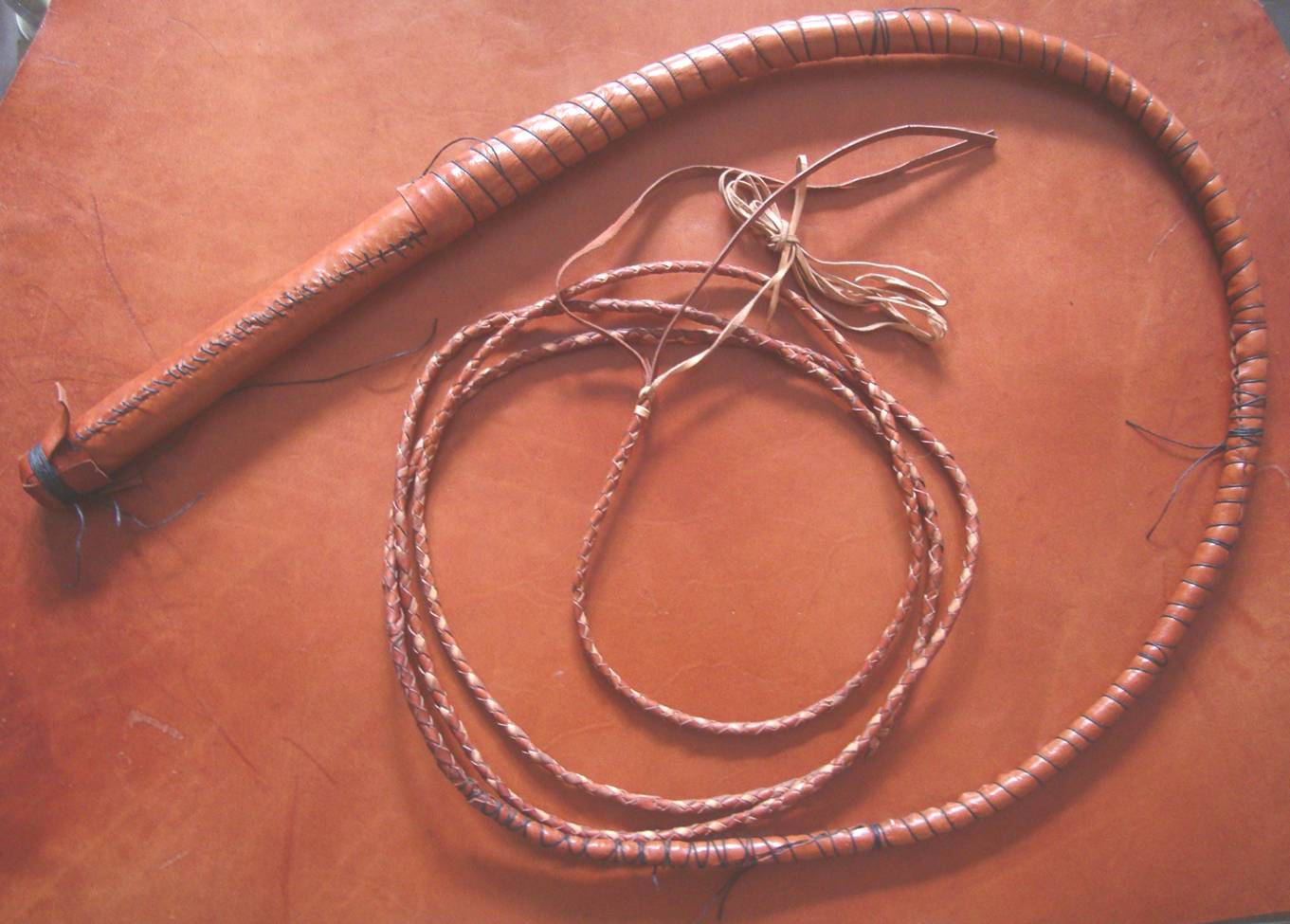
The
new whip is taking shape, and promises to be an improvement over
last year's model. But no easier to make
As part of this effort, I
needed to find sheep fat from which to make plaiting soap.
One would think that this would be easy to find in a city where
every second street corner has barbeque lamb on skewers. Not so.
The meat of the people in China is pork, and that was all we found
in this huge meat market, except for one large and very expensive
mutton roast one of the vendors had in his freezer.
We'll be eating Scotch broth
for lunch for weeks, but I did manage to render down enough fat to
make my plaiting soap. I saved half of
it to make the beeswax leather dressing, but now I only have a quarter
of it because GouGou found it in my office and what dog could
resist a feast of sheep fat?
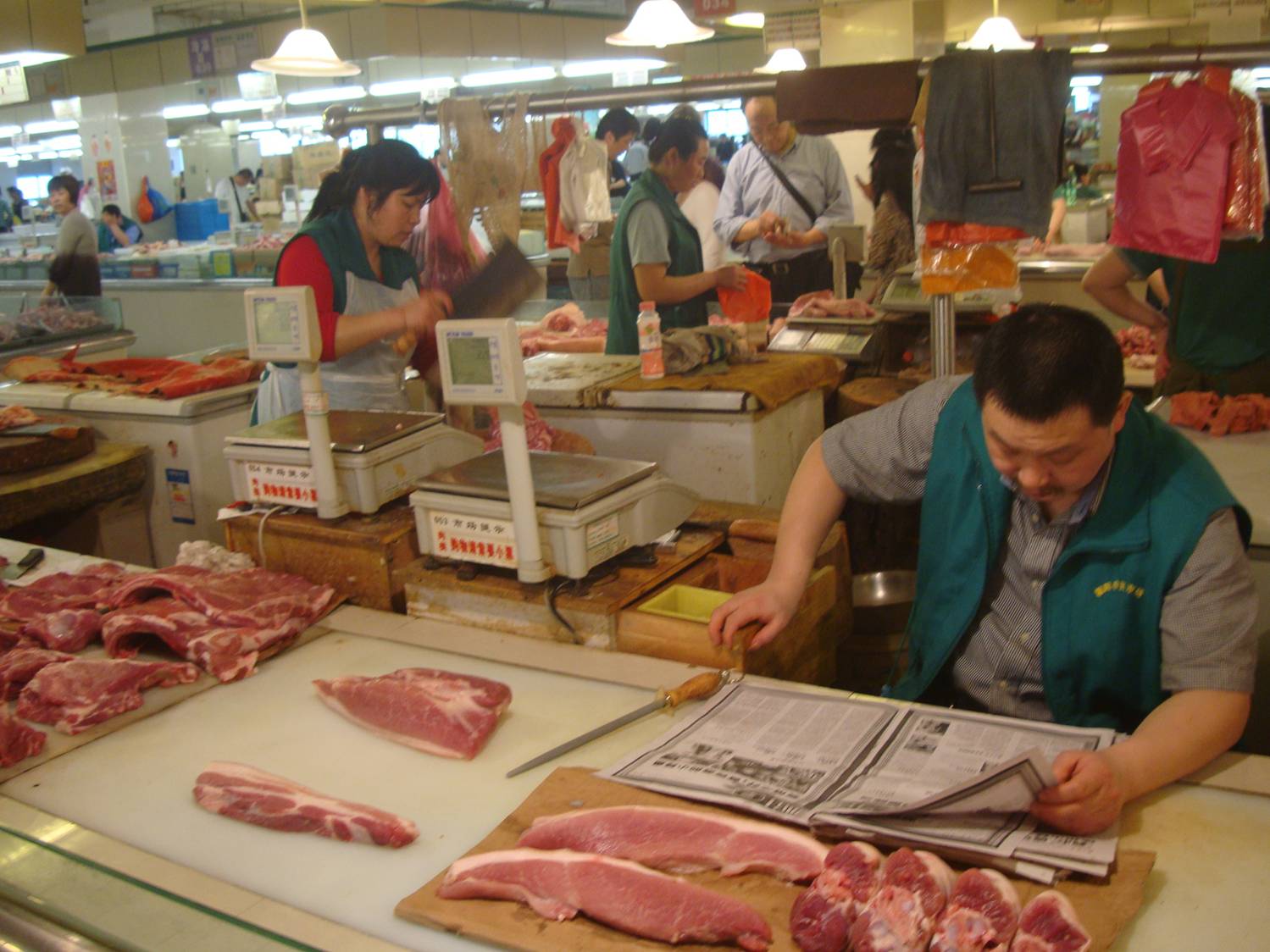
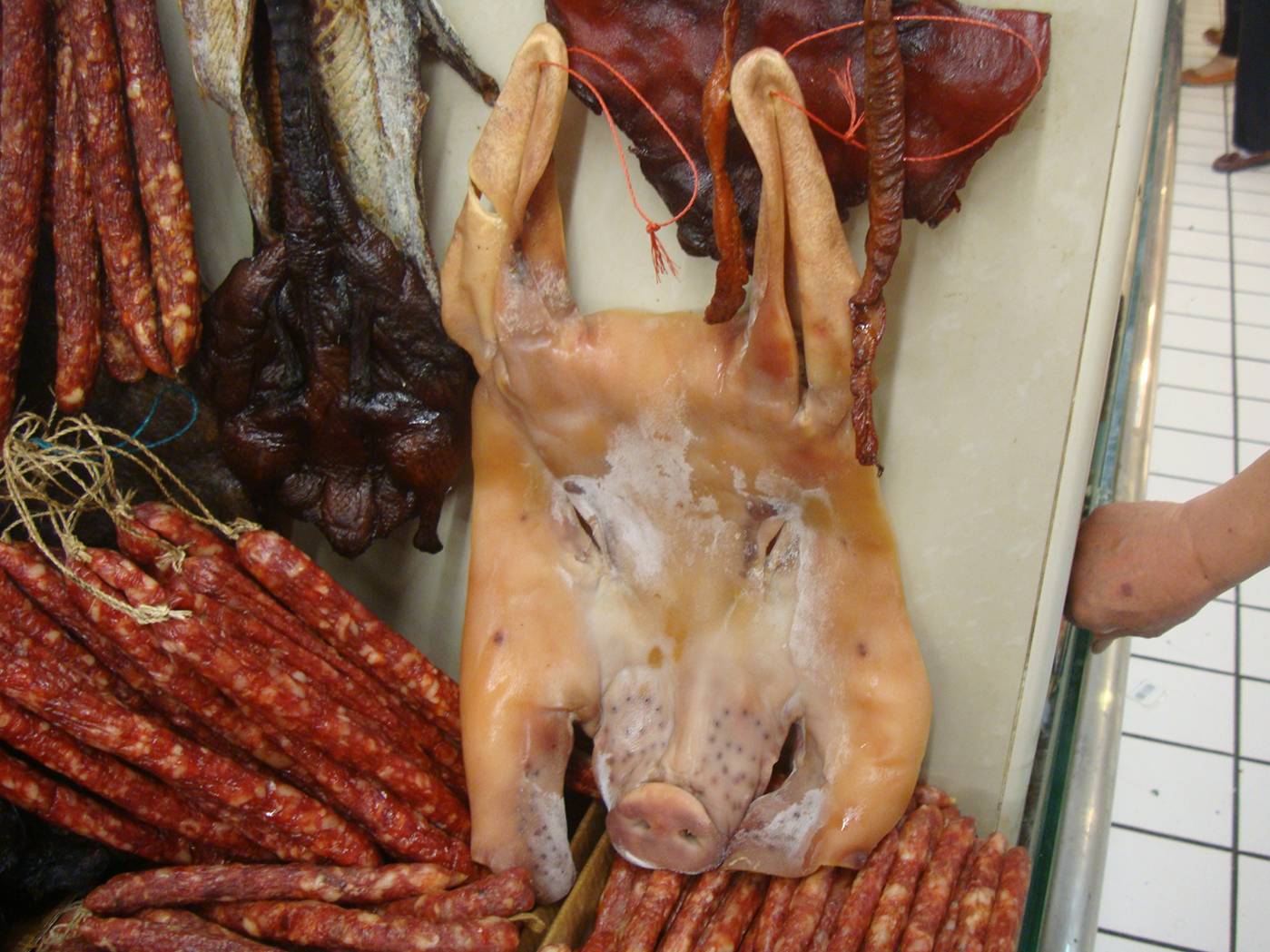
Bullwhip Progress
originally posted May 19, 2011
Here's the new bullwhip with the
belly complete and the handle platted, with my old whip, the one I'm
attempting to duplicate, for comparison. I've got the handle just
a bit thicker than the old whip, and I'm not sure I'm happy about that.
But aside from that it's looking good.

As you can see, the new whip is
coming along.
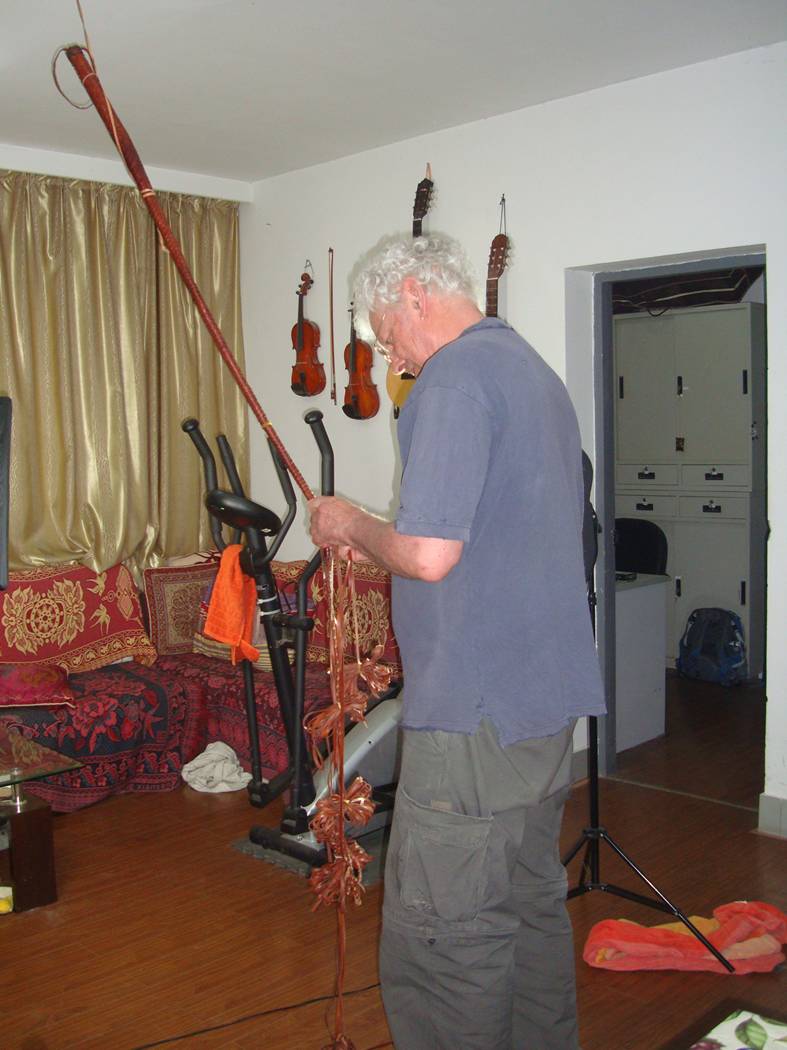
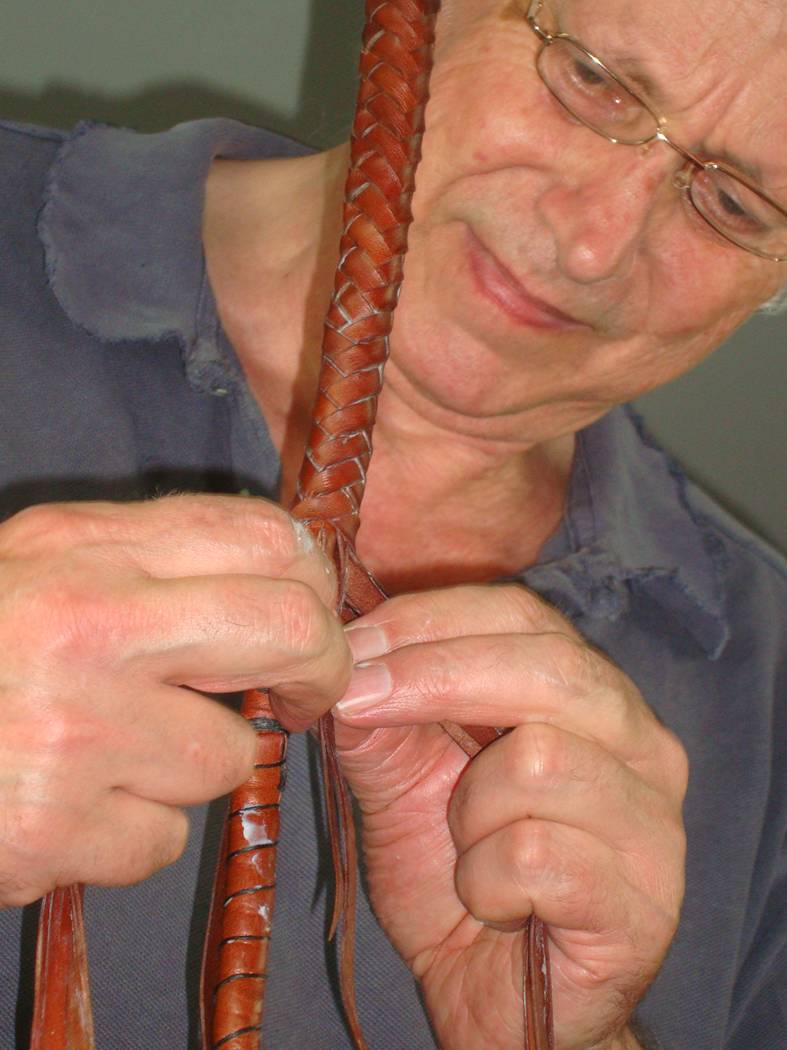
- Ruth Anderson
photos.
Bullwhip 2011 Finished
originally posted May 29, 2011
I wanted
to duplicate the whip I bought from an Australian importer in Seattle in
1974, but I really didn't know how long I needed the strands to be to
make a twelve foot whip. Turns out I played it too safe, and the
new whip comes out at a whopping sixteen feet from the butt to the start
of the fall, which is how a bullwhip is measured.
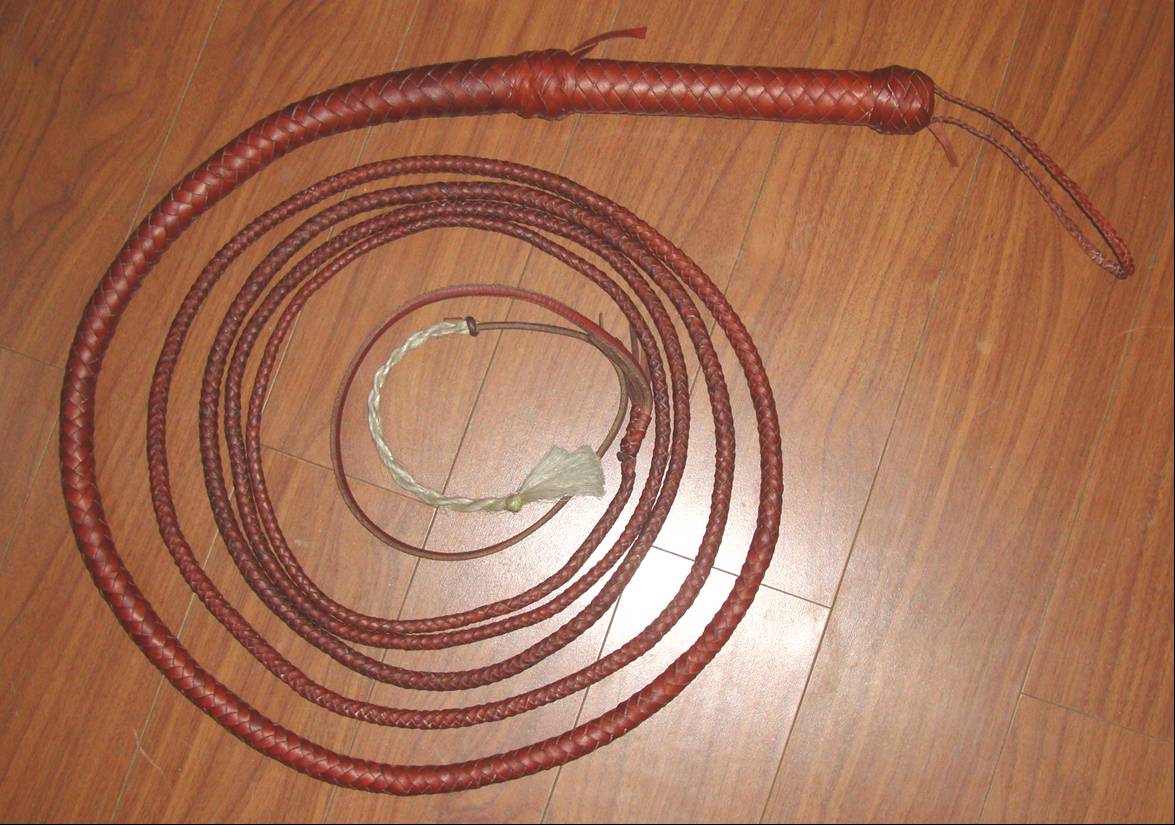
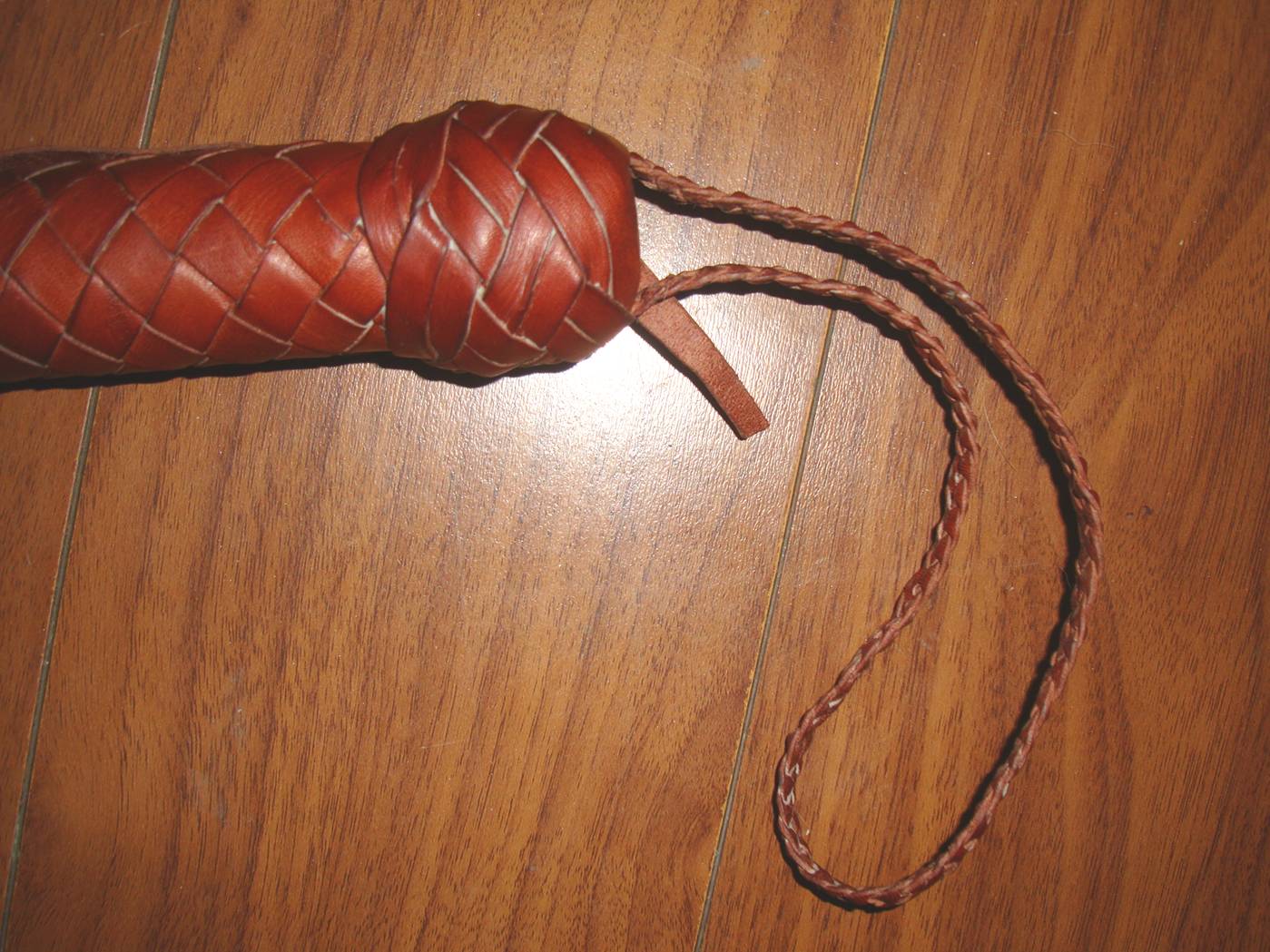

The
five part four bight Turk's head knob cost me days of frustration before
I figured out how to tie it and get it tight. I've left the tag ends on
it for the moment, because I may want to give it one last tightening,
but it's never coming loose now. The white spots are the
leather dressing I mixed up yesterday - tallow, glycerin and bees wax.
It will disappear as soon as I start handling the whip, but I think I
should add some colour for next time. Maybe I can pick up some
paint pigment this summer.
Sixteen feet is the longest whip
I've ever handled. My first attempts to crack it were a complete
failure, and I thought I would have to shorten it to something more
manageable. This confirmed my opinion that Lash LaRue, my
childhood cowboy hero, did not swing an eighteen foot whip. Pure
Hollywood exaggeration. Or was it. After I worked the whip a
bit, and got the timing down, it turns out to crack just fine. But
it is much harder to control and crack. The timing is completely
different, and I haven't managed to crack it with my right arm yet.
Still, I'm now very happy with a sixteen foot whip. It's
impressive, far more impressive than the whip I made last year, and it's
going to be fun to practice with it.
I'm afraid this hobby has me
hooked now. The new whip is not a very exact copy of the old one,
and I still think the old whip has the most classic design and
structure. So I'm going to try again next year, assuming I can get
another couple of kangaroo hides. I've been keeping notes, and
should be able to estimate the length of strand needed for the finished
whip much more accurately next time. This kind of thing is addictive.
Top of the Page
The Man in China archive index
The Incredible Summer of 2010 Wedding and
Honeymoon
The Man in China Home
|




















